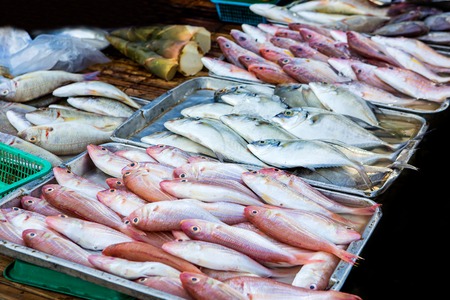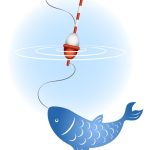1. Introduction: Rethinking Catch and Release
For many anglers across the United States, catch and release is seen as the gold standard of ethical fishing. Its promoted by conservation groups, state wildlife agencies, and even professional tournaments. The idea is simple—catch a fish, enjoy the thrill of the fight, maybe snap a quick photo, then gently return it to the water unharmed so it can live another day. But is it really that straightforward?
Over the years, catch and release has become more than just a method—it’s a philosophy rooted in sustainability and respect for nature. However, recent discussions among biologists, conservationists, and everyday fishermen are starting to question whether this practice always lives up to its ethical intentions.
The truth is, not all released fish survive. Some die from injuries caused by hooks, stress from being caught, or improper handling. In certain environments or during particular seasons, releasing a fish might do more harm than good. These realities raise an important question: Are we doing whats best for the fish—or just what makes us feel better?
Why It Matters
Understanding when catch and release may not be the most ethical option is crucial for responsible anglers who care about the health of fish populations and aquatic ecosystems. As stewards of our waters, its time we take a closer look at how our actions affect the very species we claim to protect.
Common Assumptions vs. Reality
| Assumption | Reality |
|---|---|
| Released fish always survive | Many suffer delayed mortality due to stress or injury |
| Catching and releasing doesn’t impact populations | High post-release mortality can affect local fish stocks |
| Using barbless hooks eliminates harm | Improper handling still causes damage regardless of hook type |
This article series will explore these issues in depth—from scientific findings on fish survival rates to cultural attitudes that shape our choices on the water. By rethinking catch and release, we can evolve our practices to be not only legal but genuinely ethical.
2. The Science Behind Fish Mortality
Catch and release is often seen as the ethical choice for anglers who want to enjoy fishing without harming fish populations. But even when its done by the book, science shows that not all released fish survive. Let’s break down why that happens.
Biological Stress: More Than Just a Tug on the Line
When a fish is hooked, it experiences intense physical exertion trying to escape. This stress causes lactic acid buildup in the muscles—similar to what humans feel after extreme exercise, but much worse. The longer the fight, the higher the stress levels, and that can lead to serious health problems or even death after release.
Injury from Hooks and Handling
Even with barbless hooks and careful handling, fish can suffer internal injuries or damage to their gills, eyes, or jaw. Some species are more vulnerable than others. For example, deep-hooking can puncture vital organs, especially in smaller or soft-mouthed fish like trout.
Common Injuries from Catch and Release
| Type of Injury | Cause | Potential Impact |
|---|---|---|
| Gilling | Hook or hand contact with gills | Respiratory issues, high mortality risk |
| Jaw Damage | Poor hook removal technique | Feeding difficulty, long-term survival issues |
| Internal Bleeding | Deep hooking | Organ failure, delayed death |
Delayed Mortality: The Silent Killer
A fish might swim away after being released, but that doesn’t mean it’s out of danger. Studies have shown that delayed mortality—death occurring hours or even days later—is a real concern. Factors like water temperature, exhaustion, and pre-existing injury all play a role in whether a fish survives post-release.
Factors That Affect Delayed Mortality Rates
| Factor | Description | Effect on Fish Survival |
|---|---|---|
| Water Temperature | High temps reduce oxygen levels in water | Increased stress and mortality risk |
| Fight Time | The length of time spent reeling in the fish | More exhaustion leads to lower survival chances |
| Aeration Recovery Time | If not given time to recover before swimming off | Higher chance of delayed death due to stress overload |
The Bottom Line on Fish Mortality Science
The reality is that catch and release isnt always as harmless as we’d like to believe. Even when done right—with proper gear, quick releases, and minimal handling—some fish just don’t make it. Understanding the science behind stress and injury helps us make better choices about when and how to release our catch—or if releasing is even the best option at all.
![]()
3. Species-Specific Considerations
Not all fish are created equal when it comes to how they handle being caught and released. Some species bounce back quickly, while others suffer long-term effects or even die shortly after release. Understanding these differences is a big part of being an ethical angler.
Why Some Fish Are More Vulnerable
Certain biological traits make some fish less resilient to the stress of catch and release. Factors like body structure, sensitivity to handling, and oxygen needs can all impact survival rates. For example, deep-water species often suffer from barotrauma (injuries caused by rapid pressure changes), while others have delicate slime coatings that protect them from infection—coatings that can be damaged by improper handling.
Examples of High-Risk Species
Here’s a look at some commonly caught fish in the U.S. and how well they typically fare with catch and release:
| Species | Vulnerability to Catch & Release | Key Concerns |
|---|---|---|
| Trout (e.g., Rainbow, Brook) | High | Very sensitive to warm water and handling; require high oxygen levels |
| Bass (Largemouth, Smallmouth) | Moderate | Generally hardy but vulnerable during spawning season when guarding nests |
| Snapper (e.g., Red Snapper) | High | Suffer from barotrauma; need special tools for safe release |
| Catfish | Low | Tough species that handle release fairly well under most conditions |
| Salmon | High | Extremely sensitive during spawning runs; stress can be fatal |
What This Means for Ethical Angling
If you’re targeting a species known to be sensitive, it’s worth thinking twice about catch and release. In some cases, keeping a legal catch may actually be the more humane option—especially if the fish is unlikely to survive the release. Being aware of species-specific risks helps you make informed choices that align with conservation goals and animal welfare.
Tips for Handling Vulnerable Species
- Use barbless hooks: They cause less damage and make releases faster.
- Avoid touching gills: Gills are fragile and essential for breathing.
- Minimize air exposure: Try to keep the fish in water as much as possible.
- Use proper tools: Dehookers or descending devices can save lives for deep-water species.
The Bottom Line on Species Awareness
The more you know about the fish youre targeting, the better decisions you can make on the water. Ethical fishing isnt just about following rules—its about respecting each species unique biology and doing your part to preserve healthy fish populations for future generations.
4. High-Pressure Waters and Repeated Catching
In many popular fishing destinations across the U.S., high angling pressure is becoming a growing concern. Lakes, rivers, and coastal areas that attract large numbers of anglers often see the same fish being caught multiple times throughout a season. While catch and release is intended to be a conservation-minded practice, it can unintentionally cause harm when fish are repeatedly targeted.
Understanding the Impact of Frequent Catching
When a fish is caught over and over again, even with proper handling techniques, it experiences stress and physical trauma. Hook wounds may not fully heal before the next encounter, and repeated handling can damage protective slime layers or even internal organs in more delicate species. These injuries may not be immediately fatal but can reduce the fish’s ability to feed, avoid predators, or reproduce effectively.
Popular Spots Under Pressure
Heavily fished areas like stocked urban lakes or famous fly-fishing rivers such as Montana’s Madison River or Colorado’s South Platte often see intense fishing activity. This makes individual fish more likely to be caught multiple times within a short period.
Common Consequences of High Fishing Pressure
| Issue | Description | Potential Impact on Fish |
|---|---|---|
| Repeated hook injuries | Same fish caught multiple times by different anglers | Tissue damage, infection risk, impaired feeding |
| Stress accumulation | Multiple captures over short periods increase cortisol levels | Weakened immune system, lower survival rates |
| Habitat disruption | Constant human presence changes fish behavior patterns | Reluctance to feed or spawn in key areas |
Is Catch and Release Always the Right Call?
This raises an ethical question for anglers: if we know a particular body of water is under heavy pressure and the same fish are being caught again and again, should we always default to catch and release? In some situations, it may be more humane to harvest a legal-sized fish rather than risk its decline through repeated trauma.
A Thoughtful Approach for Ethical Angling
Being mindful of how often we fish certain spots—and recognizing signs of overpressure—can help us make better decisions. Rotating fishing locations, limiting catch numbers even when practicing catch and release, or choosing less-pressured waters are all ways we can reduce harm while still enjoying the sport.
5. When Harvesting May Be the More Ethical Choice
Catch and release is often promoted as the most ethical practice in recreational fishing, but there are times when keeping a fish may actually be the more responsible decision. In some situations, releasing a fish can do more harm than good—especially if the fish is deeply hooked, bleeding, or overly stressed from the fight.
Understanding Fish Survival Rates
Not all released fish survive. Several factors affect whether a fish will live after being returned to the water, including:
- Water temperature
- Hook placement (deep gut hook vs. lip hook)
- Handling time and method
- Species-specific tolerance to stress
If you know that a fish has low chances of survival after being released, it might be more ethical to harvest it—assuming its within legal limits and seasons.
When Keeping a Fish Makes Sense
Here are common scenarios where keeping your catch could be the better choice:
| Situation | Why Harvesting Is More Ethical |
|---|---|
| Fish is deeply hooked or bleeding heavily | The chances of survival are very low; wasting the fish serves no purpose |
| High water temperatures in summer months | Warm water holds less oxygen, increasing post-release mortality rates |
| Certain species with poor release survival (e.g., trout in warm water) | Keeping legally caught fish can prevent unnecessary suffering |
| You’re already planning to eat fresh fish at home | Saves resources by using what you’ve responsibly caught instead of buying farmed or store-bought seafood |
Responsible Harvesting Guidelines
If you choose to keep a fish, do it with care and respect for the resource. Follow these tips:
- Know and follow all local regulations for size and bag limits
- Dispatch the fish humanely and quickly to reduce suffering
- Use as much of the fish as possible—fillets, bones for stock, etc.
- Avoid waste by properly storing or freezing what you cant eat right away
A Balanced Approach to Conservation
Ethical fishing isn’t about always releasing or always keeping—it’s about making informed decisions based on each situation. Sometimes, letting that fish go is best. Other times, taking it home for dinner might be the smarter—and kinder—choice.
6. Conclusion: Toward Responsible and Informed Angling
While catch and release is widely promoted as the gold standard for conservation-minded fishing, it’s important to recognize that it’s not always the best or most ethical choice in every situation. Rather than sticking to a one-size-fits-all approach, anglers can make better decisions by considering the unique circumstances of each catch.
The Importance of Situational Awareness
Every fishery, species, and environment presents different challenges. Factors like water temperature, depth of catch, fish species, and handling time can all influence whether a released fish survives or suffers needlessly. It’s not just about following rules—its about doing what’s right for the fish and the ecosystem.
Common Scenarios Where Catch and Release May Not Be Ideal
| Scenario | Why Catch and Release Might Not Work | Better Alternative |
|---|---|---|
| Deep-water catch (e.g., rockfish) | Barotrauma can cause internal injuries; survival rate is low without proper venting tools | Use descending devices or consider harvesting if legal and sustainable |
| Warm water temperatures | High temps increase stress and reduce oxygen levels, decreasing survival rates | Limit handling time or harvest responsibly if within limits |
| Exhausted fish after long fight | Fish may appear fine but die later due to stress and lactic acid buildup | Minimize fight times or avoid targeting certain species during peak heat |
Balancing Ethics, Science, and Sustainability
The key is to stay informed. Learn about local species, understand how environmental factors affect fish health, and be ready to adapt your practices. Sometimes harvesting a legal-sized fish for the table might be more ethical than releasing a dying one just to follow tradition.
Tips for Responsible Decision-Making:
- Know your local regulations: Laws exist for good reason—follow them closely.
- Educate yourself: Stay updated on best practices through reputable sources like fisheries departments and conservation groups.
- Assess each catch individually: Use your judgment based on conditions, species, and fish health.
- Avoid rigid thinking: Being flexible makes you a more ethical angler.
At the end of the day, responsible angling isn’t about choosing between keeping or releasing—its about making thoughtful choices that respect both the fish and the future of our fisheries.


